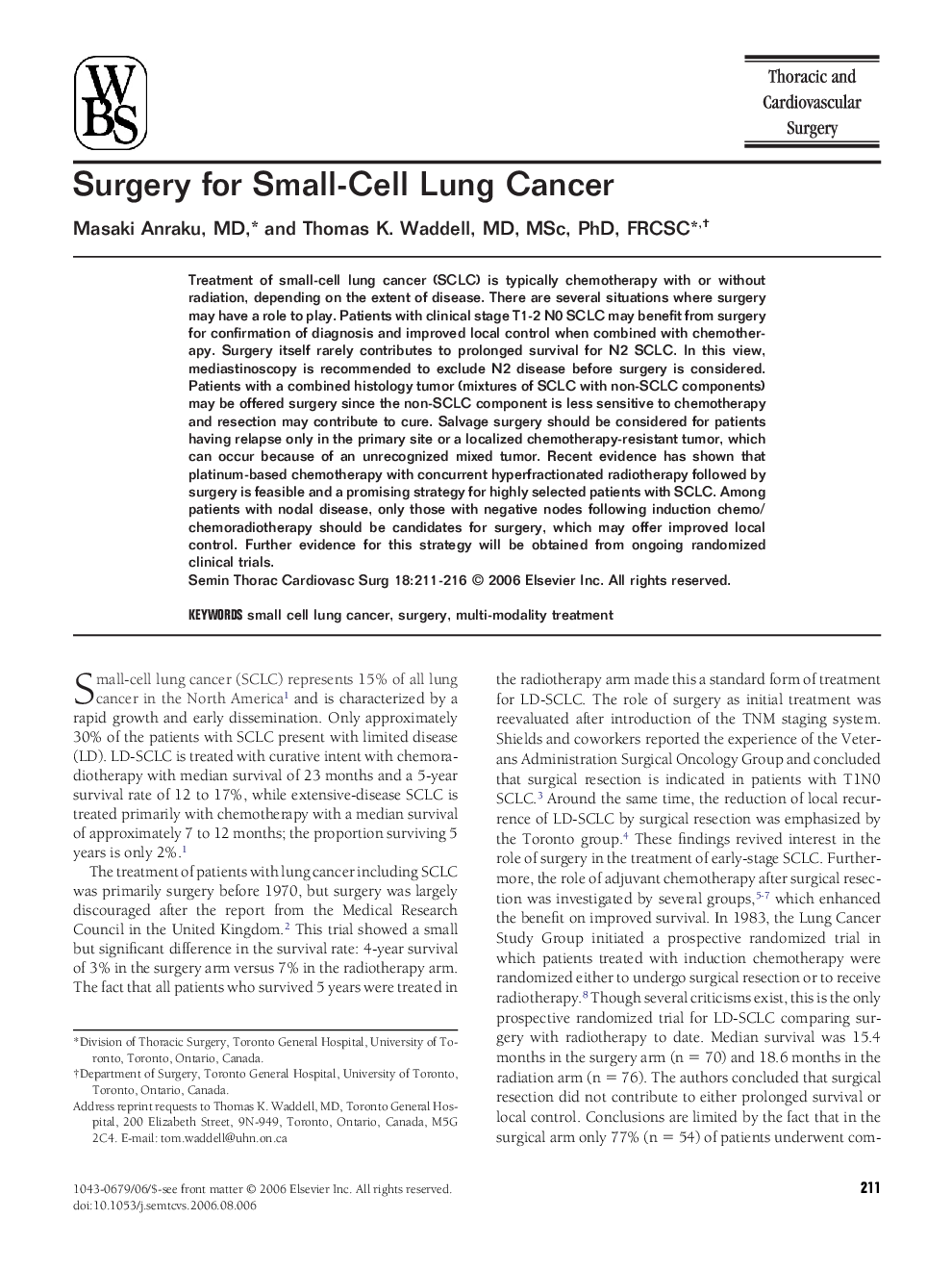| Article ID | Journal | Published Year | Pages | File Type |
|---|---|---|---|---|
| 3025820 | Seminars in Thoracic and Cardiovascular Surgery | 2006 | 6 Pages |
Treatment of small-cell lung cancer (SCLC) is typically chemotherapy with or without radiation, depending on the extent of disease. There are several situations where surgery may have a role to play. Patients with clinical stage T1-2 N0 SCLC may benefit from surgery for confirmation of diagnosis and improved local control when combined with chemotherapy. Surgery itself rarely contributes to prolonged survival for N2 SCLC. In this view, mediastinoscopy is recommended to exclude N2 disease before surgery is considered. Patients with a combined histology tumor (mixtures of SCLC with non-SCLC components) may be offered surgery since the non-SCLC component is less sensitive to chemotherapy and resection may contribute to cure. Salvage surgery should be considered for patients having relapse only in the primary site or a localized chemotherapy-resistant tumor, which can occur because of an unrecognized mixed tumor. Recent evidence has shown that platinum-based chemotherapy with concurrent hyperfractionated radiotherapy followed by surgery is feasible and a promising strategy for highly selected patients with SCLC. Among patients with nodal disease, only those with negative nodes following induction chemo/chemoradiotherapy should be candidates for surgery, which may offer improved local control. Further evidence for this strategy will be obtained from ongoing randomized clinical trials.
